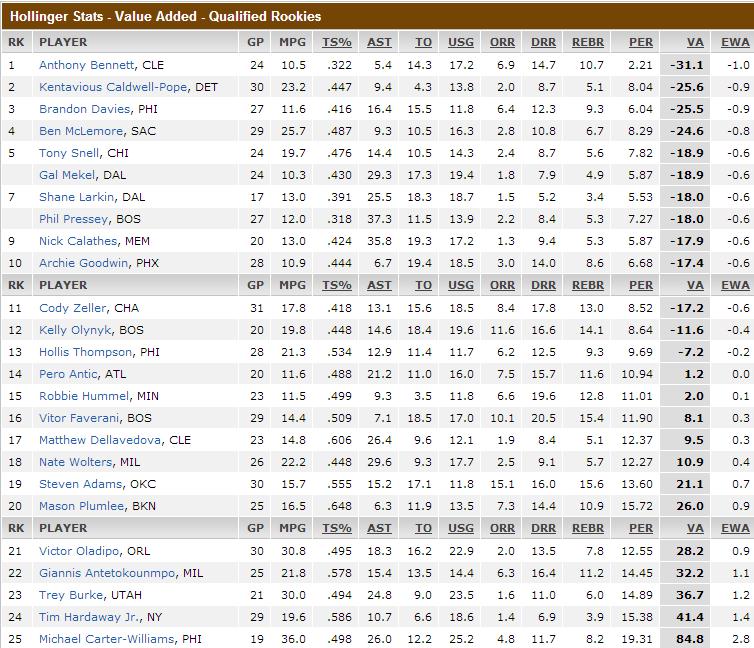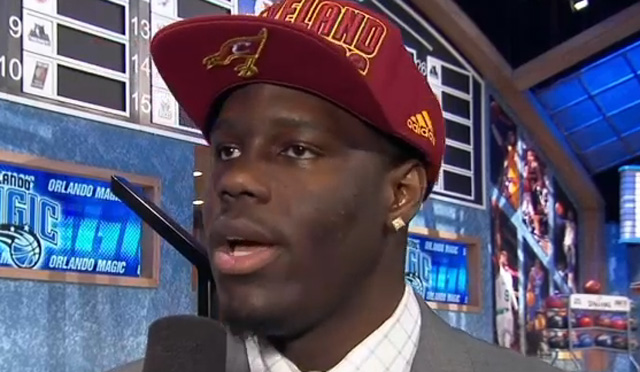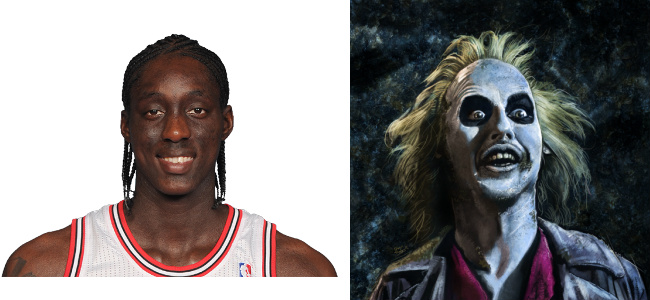
According to most NBA analysts and experts, tonights’ NBA Draft is supposedly the weakest since 2000, when the top five looked liked this: Kenyon Martin, Stromile Swift, Darius Miles, Marcus Fizer, and Mike Miller. I disagree… Completely.
Just three players in the 2000 Draft ever made an All-Star Team: Kenyon Martin (1x), Jamaal Magloire (1x), Michael Redd (1x), and oddly enough, they all made the 2004 All-Star Team for the Eastern Conference. Despite the fact that this draft is lacking a LeBron James or a Kevin Durant, there are many future starters, rotation players and potential future All-Stars. This draft may be less talented than others, but it’s pretty deep, and definitely more unpredictable – we don’t even know for sure who’s going 1!
To exercise my personal interest in this particular draft, I will break down whom each team SHOULD pick, how that will fill that team’s needs, and that player’s closest NBA comparison (seeing they reach their potential).
1) Cleveland Cavaliers SHOULD select: Nerlens Noel (PF/C – Kentucky)
Noel averaged 10.5 PPG / 9.5 RPG / 59% FG / 4.4 BPG in 32 minutes per game until his season ending ACL injury. Recently, the Cavs team doctor cleared them to draft Noel, and he’s definitely the right choice at no. 1. The Cavs will probably not contend next year, but maybe the year after (LeBron James’s return to Cleveland in 2014?). Noel has the ability to fit in immediately as a premier help-side rim protector along side Tristan Thompson and Anderson Varejao, and WILL develop a post game as he has already shown a soft touch with his dominant (left) hand around the rim. He’ll obviously need to add some mass to his painfully thin 206 pound frame if he’s going to match up one-on-one against beefier post players, but his natural shot-blocking ability and defensive instincts should serve him well as soon as he steps on the court.
NBA Comparison: Joakim Noah (More Athletic)
2) Orlando Magic SHOULD Select: Victor Oladipo (SG/SF – Indiana)
Many have said Oladipo is the only sure thing in this draft. While I disagree that he is the ONLY sure thing, I think he DOES have All-Star potential. He lives and breathes hoops, and has improved athletically and skillfully more than any other college player over the past year. When Bill Simmons asked him what he would do in his first night in South Beach when visiting the Miami Heat he replied, “Nah, I gotta guard LeBron the next day.” In this way, Oladipo is the anti-Shabazz Muhammed, widely considered the ultimate risk of the draft. Oladipo is also a D-Wade caliber athlete, and a Tony Allen caliber defender. Offensively he doesn’t like to drive to his left, has a mechanical shot, and while he shot 44% from three he only attempted 68. The bottom line on Oladipo is that, given his work ethic, he will max out his potential and should end up being a good NBA shooter. Also notable, Orlando is serious trade talks to move Afflalo and Nicholson to the Clippers for Eric Bledsoe, the Magic could have a solid young nucleus of Bledsoe, Oladipo and Tobias Harris (averaged 17.3 PPG after being traded to Orlando in 2013).
NBA Comparison: Tony Allen (better shooter)
3) Washington Wizards SHOULD Select: Otto Porter (F – Georgetown)
Otto Porter is the probably the most dynamic player in this draft (some may argue Oladipo), and has proven that he can be ‘the guy’ down the stretch of games at Georgetown. Porter averaged 16.2 ppg 7.5 rpg and shot 43% from beyond the arc in his Sophomore campaign at G-Town, and can defend his position well despite analysts worries about his ‘lateral quickness’. Anyone who is a 6’9” 3-guard has diminishing lateral quickness when they play 36 minutes of a 40 minute game. This guy has All-Star potential, and it would behoove Washington to use the pick and select him here if they don’t trade the pick to Chicago, as rumored. The Wiz need another scorer to take the pressure off of Wall and Beal, and if they can get full seasons out of Nene, Okafor and a developing Serephin they should be okay in the front court.
NBA Comparison: Luol Deng (better 3-pt shooter/won’t slash as much)
4) Charlotte Bobcats SHOULD Select: Ben MacLemore (SG – Kansas)
As the Cats’ finished 27th in points per game at a 93.4 and last in field goal percentage at 42.5%, they need a guy who can pull the ball in the bucket. MacLemore shot 49.5% from the field and 42% from three-point land, and if anyone could be the perfect fit in Charlotte, it’s this guy. B-Mac has the silkiest jumper in the draft, loves to run the floor, rebounds well for his position (5.2 rpg), and shoots 87% from the line. Essentially, Charlotte fans won’t have to put a bag over their heads watching MKG (Michael Kidd-Gilchrist) forcing up jumpers that he has never made at any level, and Kemba will have another weapon. I think he may need a few years to develop, but he’s an outstanding vertical (not the best horizontal athlete or ball-handler) athlete who can shoot. There were thoughts that Ben could go no. 1, and he still could, but he’d be a great fit in Charlotte.
NBA Comparison: O.J. Mayo
5) Phoenix Suns SHOULD Select: Anthony Bennett (SF/PF – UNLV)
An offensive-minded tweener 6’7” SF/PF, with a 7’1” wingspan and an NBA ready body won’t fix the troubled Suns, but will help. Right now their depth chart shows the SF position as P.J. Tucker with Jared Dudley behind him. If there’s a guy in this draft who I could see starting the first game of the season other than Oladipo, it’s Anthony Bennett on the Suns. He jumps forward on his jump shot, but gets good lift, and frankly, his shot looks pretty effortless and smooth. While on the subject of effortless, he doesn’t seem to exhibit much effort on the defensive end at all – something that could hurt his draft stock, but probably not much for the Suns who let up a whopping 101.6 ppg in 2012-2013. Yeah, they probably need more defense and Alex Len could be a good pick here, but Bennett’s issue on defense isn’t about ability but effort, which is that may just take a kick in the butt.
NBA Comparison: Boris Diaw (better athlete / weaker defensive motor)
6) New Orleans SHOULD Select – Trey Burke (PG – Michigan)
The Pelicans, as they’re now called, have an interesting scenario on their hands. They were very bad last year, partly due to Eric Gordon’s knee (something that could end up being a recurring injury ie. Gilbert Arenas), but also due to a general lack of offensive acumen everywhere else. While Burke doesn’t solve every issue, he can help with the scoring load off the bench, or as small-ball backcourt pairing with Greivis Vasquez (who might be traded tonight), or godforbid if Rivers improves, with him. Burke is undersized for any position in the NBA, but he knows how to get to the rim, take the big shot, and compete.
NBA Comparison – Kemba Walker
7) Sacramento Kings SHOULD Select: C.J. McCollum (PG – Lehigh)
The team whose players never seem happy, never have the ball enough, and don’t win very often could get a guy who may solve at least two of those three things – but probably not the third. McCollum, a 6’3” PG from Lehigh, could be this year’s Damian Lillard, the mid-major point guard who comes storming onto the NBA scene despite not consistently playing top-tier competition. The bottom line is that McCollum is an elite-level ball handler who can make open or tough shots off the dribble, and off screens. Also, after watching his interview with Jalen Rose and Bill Simmons, McCollum seems like he could be the team leader that the Kings desperately need. DeMarcus Cousins and Tyreke Evans just don’t cut it in the leadership category. If the Kings pick McCollum here, Isaiah Thomas will have competition for the starting point guard job in Sacramento.
NBA Comparison: George Hill (better leader)
8) Detroit Pistons SHOULD Select: Michael Carter-Williams (PG – Syracuse)
MCW can handle like a guard and dunk like a forward. I still had a hard time believing he can play point guard in the NBA until I watched his workout video where he looked more than capable, but only athletically. These tall point guards rarely work out, but MCW could be one that does. If he goes to Detroit, he’ll be able to learn a thing or two from Calderon as his ability fades, and step in mid-season when the Pistons are chillin’ in the 12 spot in the east. MCW will be able to get to post up undersized guards on the block, but he definitely needs to learn how to shoot or teams will play “Rondo Defense” on him. He has good value here, but certainly not a sure thing.
NBA Comparison: best case – Greivis Vasquez (more athletic) / worst case – Shaun Livingston
9) Minnesota Timberwolves SHOULD Select: Kentavious Caldwell-Pope (SG/SF – Georgia)
Last season the wolves’ shot a horrendous 30.5% (last in the league) from the three-point line, and Caldwell-Pope would certainly help them improve. He shot 37% from behind the arc, which is good, but his stroke looks like he could hop into that 40% range as an NBA player. He is also as athletically gifted as it gets, and has the size and ability to add to a team defensively as well. This guy gives the Wolves’ what they need, but they still may trade up to try and get Oladipo or MacLemore who are both more polished. Overall, KCP is a prime candidate to someday be a 20 point scorer on a terrible team.
NBA Comparison: Nick Young
10) Trail Blazers SHOULD Select: Alex Len (C – Maryland)
The Trail Blazers got a godsend in Damian Lillard last year, and might get some similar luck with the 10th pick of this years draft. Alex Len, who just turned 20, played half of his freshman year at Maryland with a stress fracture (not a very good sign for a 19 year old, but better than a knee injury), and quickly developed a post game. Hailing from the Ukraine, Len self-taught himself English in the little time he’s been in the states, and seems to have picked up the American game especially quickly as well. From tape he’s shown his athleticism, and an arsenal of post moves that the Maryland system didn’t seem to use enough to their advantage. The Blazers have a front court with Aldridge and Hickson, but have two unproven projects in Meyers Leonard and Joel Freeland (don’t see much potential for him). With the thought of moving Aldridge fresh in their minds, the Blazers should pick up Len if he’s available here.
NBA Comparison: best case – Tyson Chandler / worst case – Jonas Valanciunas
Related articles





